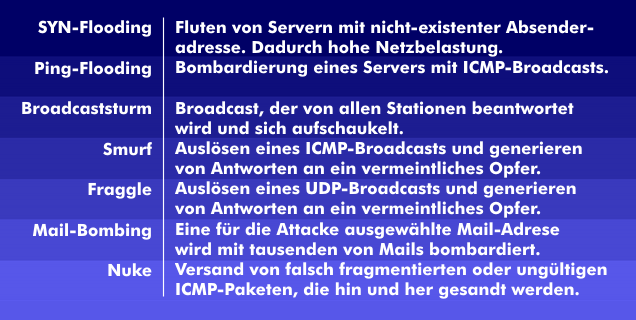broadcast storm
Broadcast storms are among the DoS attacks. They occur when many stations in a network configuration transmit a response simultaneously. Each response in turn generates more responses, which has a snowball effect.
Usually, the sending station has sent a broadcast that is answered by many stations at the same time, which can be referred to as re- broadcasting. Since re-broadcasting is subject to a certain probability, the number of answered broadcasts depends on this probability. If the probability is low, some nodes in the network do not receive a message, but if it is high, the response behavior is the same as with flooding.
Usually, broadcast storms are problems in the redundancy of the constellation, the contention situation and/or collisions. For example, topological loops in the network can be causers of broadcast storms. In the redundancy problem, nodes that already have the message may receive it another time, causing additional and redundant traffic and increasing the probability of collisions. The collision problem arises with cellular networks because they do not use collision detection.
Broadcast storms can be intentionally triggered by sending a flood of broadcast packets into a network. This can block network traffic and cause the network to collapse. Broadcast storms can cause significant damage by tying up sufficient network resources and thus affecting actual traffic.

